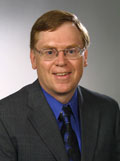|
|
High returns on educational investment
by Dan Clancy, President of the Wisconsin Technical College System
 |
| Dan Clancy, president of the Wisconsin Technical College System. Photo courtesy WTCS. |
Wisconsin citizens invest tax dollars in two preeminent postsecondary education systems: the University of Wisconsin System (UWS) and the Wisconsin Technical College System (WTCS). For the state’s investment in education to pay off, graduates must stay in Wisconsin and contribute to a strong state and local economy. The return on the state’s educational investment comes through state and local taxes that college graduates pay and from the business and industry growth and expansion fostered by the availability of a skilled and talented workforce.
The WTCS return on investment is demonstrated through annual surveys that show more than 90 percent of WTCS graduates are employed within six months of graduation. Of those employed, almost 90 percent stay in Wisconsin.
Why are so many WTCS graduates still in Wisconsin? Several factors make the WTCS unique in its appeal to state residents, including:
- Statewide coverage. The WTCS includes 16 colleges with 47 campuses that cover the entire state. Annually, one in nine Wisconsin adults benefits from services provided by the WTCS. In fact, the WTCS serves three out of every four working-age adults seeking publicly supported postsecondary education in Wisconsin.
- Accessible learning options. The WTCS prides itself on innovative learning options such as offering evening and weekend courses that expand accessibility to our cutting-edge programs and services. In fall 2001, the WTCS launched eTech College of Wisconsin, which increases access by allowing students to take courses online at any of the WTCS colleges. Since its introduction, eTech College enrollments have steadily increased.
- High earning potential in a variety of fields. Graduates in eight 2002-03 programs report median salaries exceeding $41,000 six months after graduation, including CIS-Web Analyst/Programmer, Real Estate, Electrical Power Distribution, Cardiovascular Technology, Dental Hygienist, EMT-Paramedic and Industrial Welding Technician. In fact, Diagnostic Medical Sonography graduates reported a median salary of $52,100 within six months of earning their two-year associate degree.
- Open enrollment. WTCS colleges accept all students, including those with advanced degrees and those who need additional support to earn their high school equivalency degrees or prepare for entering the workplace or earning a college degree. In 2003-04, the WTCS experienced a fifth straight year of enrollment increases, reaching a record high of 68,728 full-time equivalent students. Enrollments for this year are expected to again set new records.
- Focus on the needs of working adults. We are the premier provider of education for working-age adults who are seeking to explore a new career, to retool their skills and abilities to meet demands in their existing job, or to expand their opportunities for career laddering.In 2003-04, the average age of WTCS students was 34.5, which exemplifies the lifelong learning that is key to long-term career success in today’s competitive world marketplace.
- Educational gateway for low-income and minority students. WTCS minority student enrollment exceeds the minority percentage of Wisconsin’s population and minority enrollment continues to increase faster than the state’s minority population growth. In 2003-04, the WTCS served 53,898 economically disadvantaged students, a 17.6 percent increase since 2001-02. WTCS students transferring to the UWS also are more likely to be minority students than are other new transfer students.
- Widely diverse system mission. One of the most important, and most challenging, aspects of the WTCS is its diverse mission, which not only includes more than 300 degree programs but also incumbent worker training, continuing education, apprenticeship training, services to high school age students who can benefit from postsecondary education, community service courses and adult basic education that includes English as a Second Language and remedial coursework in English and mathematics.
One interesting dynamic that reflects our mission is the percentage of WTCS students who have already earned a bachelor’s degree or higher. In each of the last five years, more than 10 percent of students enrolled in WTCS programs already had a baccalaureate, master’s or even PhD. We regularly hear stories of college graduates with advanced degrees who find that WTCS education and training makes the difference in their success in the labor market.
The WTCS will continue evolving so that our graduates and students have the skills that will ensure their success. In turn, we believe our graduates will continue to demonstrate a strong commitment to Wisconsin. There is no better return on our statewide investment in education.
related information on the Web
printer friendly format
|
printer friendly format
|







